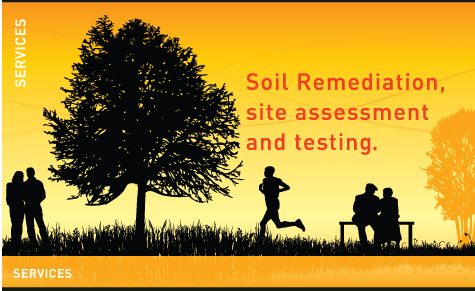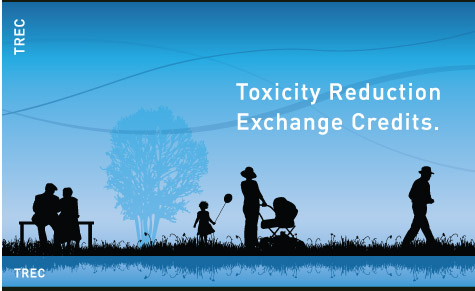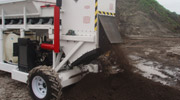

1. What causes contamination in the ground and why should we clean it up?
2. What makes Shift Soil Remediation different?
3. What work are we doing under the new legislation Part IIA, Environmental Protection Act 1990?
4. What is the legal definition of 'Contaminated Land'?
5. Will all polluted sites be legally determined by a council to be 'contaminated land'?
6. Does Part IIA contaminated land legislation apply to me?
7. Is brownfield land 'contaminated land'?
8. What are the Environment Agency's responsibilities under Part IIA?
9. How could 'contaminated land' investigations affect me?
10. How long does it take to determine if land is contaminated and carry out any necessary remedial (clean up) works?
11. Who pays for the clean up of 'contaminated land'?
12. I think my site may be contaminated, what can I do?
13. Can you help with Toxicity Reduction Exchange Credits (TREC)?
14. I have a contaminated land condition on my planning approval, what do I do?
15. I have a gas condition or gas informative on my planning approval, what do I do?
16. How can I find out if my home or the home I am buying is on 'contaminated land'?
17. What do I need from a developer if I am buying a new house on a development, which has had Contaminated Land conditions attached as part of its planning approval?
18. Who is responsible if things go wrong due to contamination?
1. What causes contamination in the ground and why should we clean it up?
Contamination (pollution) of land can arise as a result of past poorly regulated industrial and waste disposal activities carried out with little regard for the environment as well as illegal dumping and accidental spillage of substances. In some instances contamination may be natural rather than man-made. Some of the more common contaminants include oils and fuels, domestic and industrial waste, heavy metals and solvents. Where contamination is found to be significant, it needs to be cleaned up to minimise the harm it could cause of people and the environment in general.
2. What makes Shift Soil Remediation different?
Nature has a wide variability in soil conditions and soil content, even within small distances. This is the principal barrier to effective and efficient remediation of contaminated soil. The Shift Soil Remediation process is fully mobile and is designed to eliminate this variability in the soil while introducing one or more chemical or biological reagent(s) known to degrade and/or neutralize the specific contaminants in that soil. We are able to tailor the choice of chemical and/or biological reagent to the specific type and severity of contamination, and to the specific soil conditions at a site. Second, the process reduces the soil to a fine particle state in order to maximize access to the contaminant molecules. Third, the process ensures the even distribution of the reagent(s) throughout this soil matrix, and the degradation/neutralization is completed before the soil loses its homogeneous and fine particulate composition. Finally, to improve speed and efficiency, the process creates a relatively high level of entrainment in the soil, along with a carefully calibrated level of moisture content.
3. What work is been done by the Local Government Council’s under the new legislation Part IIA, Environmental Protection Act 1990?
The new legislation requires local Councils to proactively identify contaminated sites that are not suitable for their current use. The Local Councils Environmental Protection Unit (EPU) carries out these statutory duties. If necessary, the EPU have enforcement powers to get the sites cleaned up.
4. What is the legal definition of 'Contaminated Land'?
The Environmental Protection Act 1990 introduced a legal definition of 'Contaminated Land' for the first time. Section 78A of the Act states that: 'Contaminated Land' is any land which appears to the Local Authority in whose area it is situated to be in such a condition, by reason of substances in, on or under the land, that: significant harm is being caused or there is a significant possibility of such harm being caused; or pollution of controlled waters is being, or is likely to be, caused. Due to recent amendments where contamination is due to radioactivity, harm or significant possibility of harm is limited to human receptors only at present.
5. Will all polluted sites be legally determined by a council to be 'contaminated land'?
Not necessarily. For the Council to legally determine a site as 'Contaminated Land' all of the following must apply: There must be one or more contaminating substance present in a significant quantity (called the source); there must be one or more specified receptors present (these can be people, animals, plants, rivers, underground water resources or buildings); there must be at least one plausible pathway by which contaminant can reach the receptor such as skin contact or inhalation of vapours (forming a Pollutant Linkage); and there must be a significant possibility that the Pollutant Linkage could lead to significant harm to one or more receptors. For radioactively contaminated land only harm to human health receptors is considered at present.
6. Does Part IIA contaminated land legislation apply to me?
The contaminated land regime has implications for those who have caused or knowingly permitted land to be contaminated or who own, occupy or intend to purchase or sell land that is contaminated.
7. Is brownfield land 'contaminated land'?
Not necessarily. Brownfield is a term often used to describe previously developed land. Most land that has been previously developed for industrial purposes will have some contamination on it, but not all will meet the definition of contaminated land under Part IIA.
8. What are the Environment Agency's responsibilities under Part IIA?
For some sites known as 'special sites', which includes sites affecting rivers, aquifers and water supplies, have radioactive substances on site or are former Ministry of Defence land, the Local Council’s EPU will carry out the initial work to identify the site as 'Contaminated Land' and consult with the Environment Agency about designating the site as a 'special site'. The remediation (clean up) of 'special sites' will be enforced by the Environment Agency as set out in the Part IIA Guidance Document.
9. How could 'contaminated land' investigations affect me?
You may be affected by investigations if you own land, occupy land, are a tenant of land or operate a process on land that the Local Council has reasons to believe may be contaminated. The Local Council will have already carried out some preliminary investigation work to determine the likelihood of contamination at the site and will inform all those who may be potentially affected by inspections, intrusive investigations and possible remedial works well in advance of them taking place.
10. How long does it take to determine if land is contaminated and carry out any necessary remedial (clean up) works?
It is difficult to predict how long it will take to determine a site and to carry out any remedial works as this is likely to vary from site to site. Based on a number of sites that have been investigated throughout the country, time scales have varied from approximately one to five years, with some sites being investigated over longer periods before a decision is reached on whether or not it requires remediation (clean up). Shift Soil Remediation aim to be the fastest in the industry to turn around a site.
11. Who pays for the clean-up of 'contaminated land'?
The Local Council will pay the cost of investigation into the contaminated status of the land under Part IIA by applying for a government grant. In the case where remedial works (clean up) are needed to prevent harm due to unacceptable risks, other parties may have to meet the costs, such as the original polluter of the land where they can be found, or the current owner or occupier of the land.
12. I think my site may be contaminated, what can I do?
In the case of a brownfield site (previously developed land), if you are the landowner you may wish to get specialist advice on the investigation and clean-up of the land from private consultants such as Shift Soil Remediation and then carry out voluntary remediation of the site under the planning regime. Alternatively you should contact your Local Council, who will consider if the land is causing an immediate risk to receptors and if the problem can be dealt with under another regime other than Part IIA.
13. Can you help with Toxicity Reduction Exchange Credits (TREC)?
Based on a concept originating from Jonathan Brewer, credits are generated through remediation of contaminated soil and we have produced more Toxicity Reduction Exchange Credit’s than anyone else in the soil remediation industry. As a founding member of the Toxicity Reduction Exchange Credit we are best placed to facilitate the creation and transaction of these credits.
14. I have a contaminated land condition on my planning approval, what do I do?
If you have made a planning application relating to a development that is on or close to a former landfill site or other industrial area, you may have a Contaminated Land condition attached to your planning permission. A condition is attached in circumstances where they feel that special precautions and contamination remediation works are likely to be required to ensure the development can be implemented with adequate regard for environmental and public safety. You should contact Shift Soil Remediation for further help.
15. I have a gas condition or gas informative on my planning approval, what do I do?
A gas condition or gas informative will be used where the application site is near a former/current landfill site, infilled pit or other ground conditions which may result in the generation of ground gas. The main gases of concern are methane and carbon dioxide, which are generated in some landfill sites and also in natural ground in varying quantities as a result of bacteria breaking down organic matter. Contact us for further advice.
16. How can I find out if my home or the home I am buying is on 'contaminated land'?
Your solicitor can conduct an environmental search on your behalf consulting various agencies including the Local Authority about information on the land in question. You could use one of the private commercially available search companies to carry out the work for you. Their websites often allow for a basic search to be carried out for free on-line, but charge for a more detailed report, including further enquiries to Local Authorities.
17. What do I need from a developer if I am buying a new house on a development, which has had Contaminated Land conditions attached as part of its planning approval?
A 'remediation certificate' produced by the consultant or expert on behalf of the developer stating how the site has been remediated to a 'suitable for use' standard. Where this is not available, copies of the remediation reports from the developer.
18. Who is responsible if things go wrong due to contamination?
Under the Planning regime, it is the responsibility of the developer to ensure that a development is safe and 'suitable for use' for the purpose for which it is intended.









